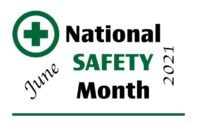Since 2016, when the International Civil Aviation Organization (ICAO) implemented drastically more restrictive global regulations on shipping lithium batteries by air, shippers have adapted and done their best to comply. Meanwhile, regulatory agencies continue to update regulation in an effort to keep lithium battery transport by air as safe as possible. The most recent change…
Our top 10 posts of 2021: Dangerous Goods sanity for a crazy year
2021 started with the world in the grip of a pandemic and ended … with the world in the grip of a pandemic. In between, the global supply chain struggled with labor shortages, shipwrecks, material shortages, capacity crunches, chronic disruptions and the most stressful holiday shipping season in memory. In our corner of the Dangerous…
Dangerous Goods 2021: Regulatory highlights and their implications for 2022
If 2020 was the year of the pandemic, the global supply chain may remember 2021 as the year of the capacity crunch. With the pandemic still impacting workforces and travel, a perfect storm of other factors combined with surging demand to disrupt supply chains as never before. The Dangerous Goods regulatory world, while naturally affected…
New opportunities for hazmat shippers in India: Pando integrates DGIS
If you work in the Dangerous Goods supply chain, you’ve probably heard something like this before: “The challenge our customer faced was one where the packing and transportation systems were siloed. The systems didn’t really talk to any of their upstream or downstream systems. They managed Dangerous Goods on Excel sheets. The problem in front…
What will lithium battery shippers do without Section II Packing Instructions?
On January 1, 2022, the new, 63rd Edition IATA Dangerous Goods Regulations will take effect. One of the most significant changes from previous regulations is that Packing Instructions PI 965 and PI 968 have been revised to remove Section II. Readers of this blog will now likely have one of the following reactions: What the…
What if Dangerous Goods regulatory publications were made into movies?
Why aren’t people more excited about the release of new Dangerous Goods regulatory publications? Sure, they’re long and intimidating, but that didn’t stop the Game of Thrones series from becoming best-sellers. And no, they’re not very entertaining, but they are completely essential for their role in keeping hazmat shipments safe and compliant. Every organization in…
Will PHMSA receive Dangerous Goods research ideas that actually make DG simpler?
PHMSA wants you to get creative. As Labelmaster Senior Regulatory Specialist Nikki Burgess, CDGP, DGSA, reported in the July 12 DG Digest, “The agency has posted a Broad Agency Announcement (BAA) to solicit concepts and innovative ideas for leading-edge research and techniques to advance the safe transportation of hazardous materials.” The request specifically covered these…
In Dangerous Goods, every month is National Safety Month.
Since June is National Safety Month, we thought it would be a good time to reiterate the most important reason Dangerous Goods professionals do what we do. Yes, it’s safety. Why do we help shippers understand and comply with Dangerous Goods regulations? Safety. Why do we consistently point out areas where shippers may need extra…
Hazmat shippers need internal SMEs. Who are they, and how do you train them?
If your organization ships Dangerous Goods with any frequency, you probably have one person whom everyone else goes to with hazmat questions. They’re the go-to guy, the resident wise woman, the walking DG shipping manual—in other words, the internal subject matter expert. And they’re indispensable to your operation. Where did your internal hazmat transport SME…
These 4 words can be a key to Dangerous Goods terminology
Your typical Dangerous Goods regulatory manual is more than a thousand pages long and may contain close to one million words. How is it possible that four of them could be so important? According to Labelmaster Senior Manager Jim Shimko, “There are four words that can help you interpret the regulations. And they can work…









